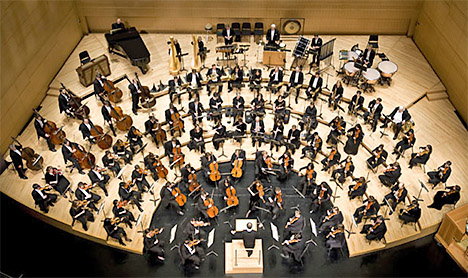Music and Hermeneutics

By James B. Jordan, at Theopolis Institute.
From time to time, when I’ve lectured on how to read the Bible, I’ve used art-music as one example thereof. When we listen to a simple folk song, we hear the same melody over and over again, but this is not how composers write “high” music. Let me amplify.
A composer will put out a theme (melody) clearly and forthrightly. You can hear it without diffculty. And, from time to time that melody will come back, and without diffculty you will hear it again. But what you probably won’t hear, unless you are trained to listen to music, is that the melody is being used in more ways. It may be broken down, and parts of it used in various ways in the overall piece. It may be played in the bass line, or in an alto line, underneath a more prominent second melody or theme. You’ll hear the new melody, and not notice that the old melody is being used underneath. The melody may be stretched out into slower notes (augmented), or played twice as fast (diminished). It may be used like a round (canon; ricercar; fugue), coming in over and over again on top of itself. It may be inverted (switching high and low notes), or played cancrizans (backwards). (A good listener can hear an inversion, but it takes a really good one to notice when the melody runs backwards.) The melody may be taken from a minor key to a major one, or vice versa. A composer will introduce one theme, and then another, and then play them at the same time.
Continue reading at Theopolis Institute.

























